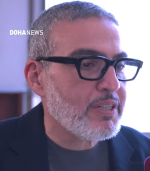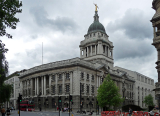
Recently published data from the 2021 census has shed light on the rich religious diversity within households across England and Wales. The analysis indicates that nearly 300,000 households
in the two nations consist of individuals from different religious backgrounds, highlighting the "rich complexity of religious life" within their communities. This marks the first time such detailed information has been gathered, indicating the increasing prevalence of religious diversity within households and families.
The 2021 census revealed that the religious makeup of the population is more diverse than ever, with fewer than half of respondents identifying as Christian. Within the 17.3 million multi-person households in England and Wales, approximately 1.6% (285,000) were reported as having members with different faiths living together harmoniously.
London showed a notably high proportion of multi-faith households, with some areas such as Hounslow, Westminster, Barnet, and Harrow reporting one in 20 households having individuals from different religions. Outside London, Slough in Berkshire stood out, with 4.6% of multi-person households showcasing religious diversity.
Reverend Richard Sudworth, the Church of England's national inter-religious affairs adviser, viewed the figures as indicative of love, loyalty, and mutual care existing across religious differences in various neighborhoods. He highlighted that households and families have become places of increasing religious diversity, contributing to the rich tapestry of religious life within the nations.
The Muslim Council of Britain welcomed the data, viewing it as evidence that society is capable of togetherness, mutual care, and understanding. The organization emphasized the importance of diverse communities coming together in pursuit of the common good, fostering a society that celebrates its multicultural and religiously diverse nature.
The census data provided a comprehensive breakdown of the types of religions practiced in various households. While Christian-only households accounted for 44.3% of all households, other configurations included those with a mix of Christianity and no religion, as well as combinations of Christianity with other faiths. Additionally, households practicing Islam, Hinduism, Sikhism, Judaism, and Buddhism were also identified.
The census revealed an interesting trend toward secularism, with 30.3% of households in England and Wales following no religion, indicating the growing influence of a non-religious segment of the population. Overall, the census offers valuable insights into the religious landscape within households, reflecting the changing fabric of society in these regions. Photo by AA, Wikimedia commons.




































